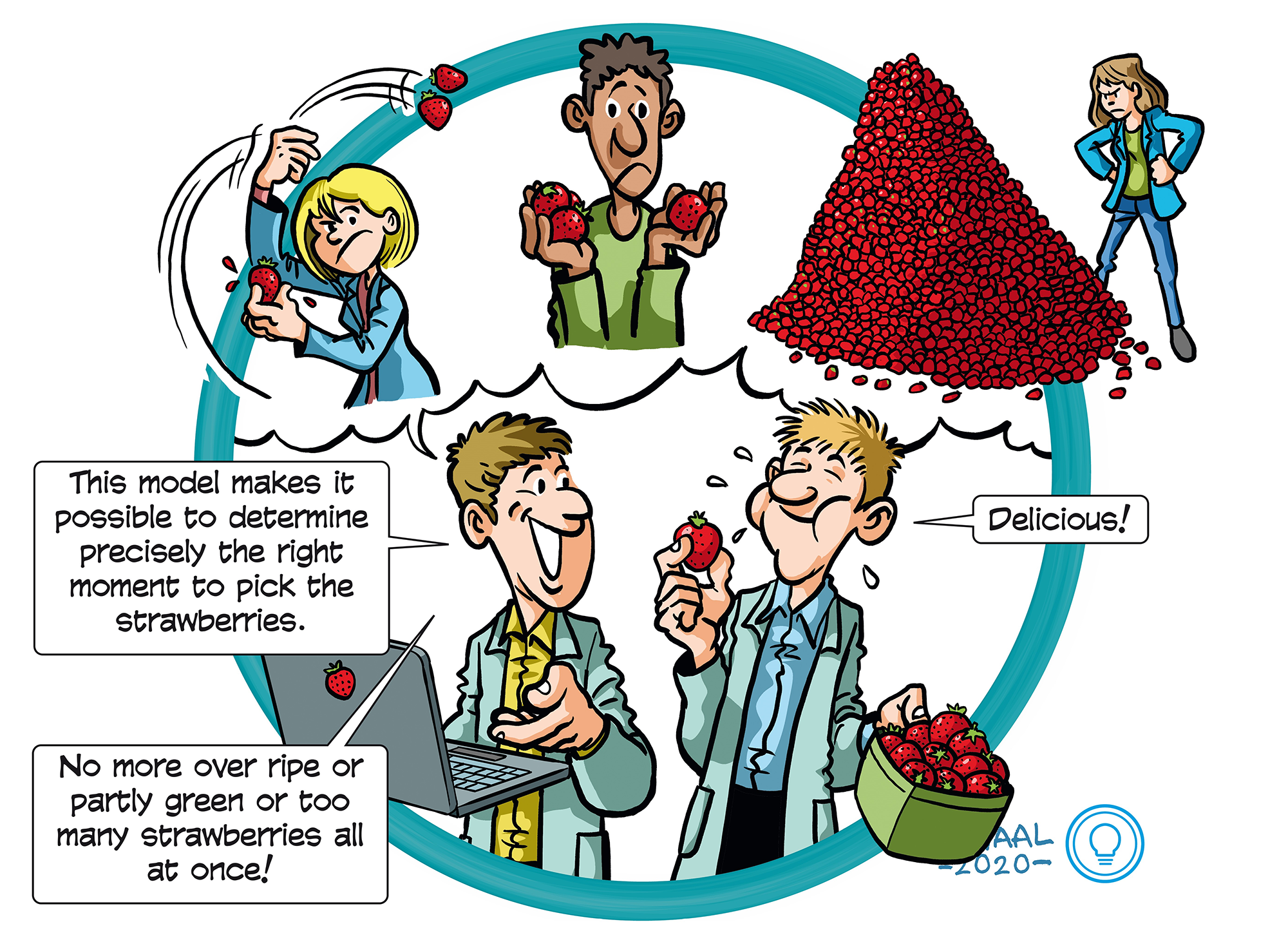AI and cultivating Strawberries
Themes: Software Technology & Intelligent Systems


A TRL is a measure to indicate the matureness of a developing technology. When an innovative idea is discovered it is often not directly suitable for application. Usually such novel idea is subjected to further experimentation, testing and prototyping before it can be implemented. The image below shows how to read TRL’s to categorise the innovative ideas.
Summary of the project
Cultivating strawberries is not straightforward since they have to be picked when the fruit is just ripe. Once a strawberry is picked it will not ripen any further. So, too early and you will pick unripe fruit and too late and the fruit will be over ripe. The ripen process of a strawberry is influenced by various factors over time such as the time of planting, water, nutrition, temperature and the amount of sunlight it receives. Strawberry growers are very good to determine in the moment if a strawberry is ripe and needs to be picked. However, because of the many factors that influence the right moment for picking it is more difficult for the growers to predict when this moment will be.
On the other hand there are the retailers who prefer to have a steady supply of high quality strawberries. They can steer the demand for strawberries with discount offers when there is a peak in the supply after warm and sunny weather. However, they try to manage the supply by purchasing strawberries from multiple growers and asking each of them how much they can supply and when. Here there is a mismatch in information as this is difficult to say for growers. To tackle this problem the researchers are working on two different AI techniques and in the end hope to be able to link the two to offer a solution for the problem described above.
In the first part of the project they aim to build a model using machine learning that can predict or give a distribution over time for when the strawberries are ripe and ready to be picked. They will gather data on how the strawberries ripen by taking photo’s over time, keeping track of the weather data and incorporating the decision of the grower when the strawberries can be picked. With this data, the model is trained to predict when strawberries should be picked based on weather predictions and photos of the current status of the crop.
For the second part of the project, given the prediction when the strawberries will be available, how much the stores have in stock and an idea of what they think the need to match consumer demand, the researchers will be developing and comparing various algorithms – such as stochastic optimization or Markov decision processes - that can be used to coordinate the distribution of the strawberries over the different stores. The aim is to make the algorithms run quickly to facilitate real-time support of these decision, while suggesting solutions that match the demand over time as well as possible.
Finally the researchers will work to see if it is possible to integrate both models to further improve the quality of the decision support. The end result will give growers and distribution centers knowledge that can support their decisions in the whole planning process of this supply chain. The beauty of this innovative idea is that it combines fundamental research into algorithms with an application in daily life.
What's next?
If the researchers manage to create a model that can predict which moment in time will be the best for harvesting strawberries they also foresee that it is just a small step to creating a model which can give you information about each individual strawberry and its harvesting moment. They envision a picker wearing Augmented Reality glasses and in this AR the picker will see if the strawberry needs to be picked or not. Another foreseeable future is that robots will pick the strawberries.
For the algorithm the next step would be to see if it can be applied in other cases or situations which have a harvest vs distribution challenge such as the electricity yield and distribution of a solar panel or the logistics of trains and the timing of their maintenance.
dr. Mathijs de Weerdt
dr. ir. Thomas Abeel
Faculties involved
- EEMSC
